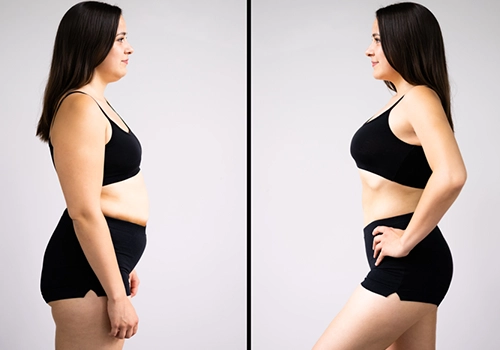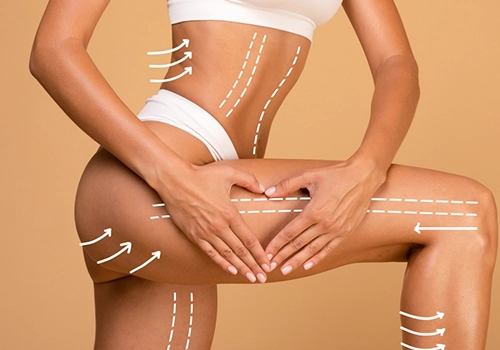Sculpting Confidence: Exploring the Aesthetic and Functional Benefits of Abdominoplasty
Abdominoplasty, or Abdominal Reconstruction, improves your tummy. It’s Cosmetic Abdominal Surgery, not repairing. It’s elective surgery—people choose it above necessity. This procedure is growing more popular since it strengthens and tones the belly.
Whether you’re considering abdominoplasty to regain confidence in your appearance or to address the changes in your abdominal region due to factors such as pregnancy or weight loss, Dr. Maadico’s Cosmetic Department in Iran offers a comprehensive range of services tailored to meet your unique needs.
This essay will discuss abdominoplasty, or tummy tuck, parts. We will discover how it is done, why individuals have it, what to consider before getting it, and how cosmetic surgery is changing.
Historical background
Do you know abdominoplasty’s fascinating history? It started in the early 1900s. It originated in plastic surgery, which alters our bodies. the procedure has changed a lot since it started. Surgeons are trying hard to be safer and help individuals appear better afterward. Abdominoplasty, or a stomach tuck, was invented to aid people with loose abdominal skin after having a baby or decreasing weight. It can currently be used for several purposes to benefit different patients
The Evolution of Abdominoplasty
Combination processes involve combining two or more items.
Did you know surgeons are performing abdominoplasty? Special surgery makes tummies flatter and tighter. But guess what? They’re continuing! Some doctors combine abdominoplasty with liposuction or breast augmentation. This allows them to assist patients to achieve even better results in one procedure.

Preoperative Planning and Considerations
- Selecting Patients
Patient selection involves selecting the right person for a treatment or study.
Healthy persons with modest expectations are suitable candidates for abdominoplasty. We examine your age, medical history, and lifestyle choices throughout our consultation.
- Weight Stability
Weight stability refers to maintaining a consistent weight over time.
Before abdominoplasty, patients should maintain a constant weight. Knowing that weight fluctuations following surgery can alter outcomes is crucial.
- Scarring
When undergoing surgery, patients should be aware of the possibility of scarring. Surgery causes scarring, which cannot be avoided. A mark or line on the skin. Patients must be informed about scarring before surgery. Surgeons aim to place cuts in the appropriate places to minimize scarring. Taking care of yourself after surgery is crucial for scar improvement.
- Realistic Expectations
To achieve realistic expectations, the patient and surgeon must communicate and understand each other. This gives them realistic expectations. Abdominoplasty can help, but it’s not a magic bullet for weight loss or perfection.
Surgical Techniques
Abdominoplasty is a big word that means there are different surgeries to help with different things. The most common types are:
- traditional abdominoplasty
In this procedure, the surgeon makes a special cut from one hip to the other. This helps them take away extra skin and fat and also makes the muscles underneath tighter. This method is great for people who have loose skin and their muscles are not close together.
- mini-abdominoplasty
This surgery is not as invasive as the regular abdominoplasty, which means it is not as intense or complicated. Instead of working on the whole tummy, mini abdominoplasty focuses only on the lower part of the tummy, the area below the belly button. The cut is tinier, which is great for people who have a specific problem, like a little pouch or droopy skin on their tummy.

- extended abdominoplasty
in this technique, we don’t just focus on the tummy area. We also take care of the sides and lower back to make everything look nice and smooth. Sometimes, when people lose a lot of weight, they might have extra skin on their sides and back.
- reverse abdominoplasty
It’s not as common as the regular kind, but it’s still very interesting. Instead of making the incision down low on the tummy, like in a regular abdominoplasty, the incision is made just below the breasts. Isn’t that fascinating? This technique is great for people who have loose skin in their upper abdomen. You can also choose to have other procedures done at the same time to get the best results.
In Tehran, abdominoplasty Emerges as an Affordable Weight Loss Alternative, Promising a Transformative Impact on Patients’ Well-Being.
Technological Integration
Doctors use fancy tools to improve belly tucks. Lasers and unique radio devices improve precision and recovery time.
Recovery and Downtime
A tummy tuck, or abdominoplasty, requires relaxation and healing time for patients. They should avoid excessive physical exertion and take care of their body. To have a smooth recovery after surgery, you must know and prepare for the recovery process.
Nutrition
A smooth abdominoplasty recovery requires a good diet. Some general guidelines:
- Hydration
To speed recovery and prevent constipation after surgery, drink plenty of water.
- Balanced Diet
Eat a balanced diet of lean proteins, fruits, vegetables, and whole grains. Good nutrition aids tissue regeneration and healing.
- Protein Intake
Protein-rich foods include lean meats, poultry, fish, eggs, dairy, legumes, and nuts. Tissue healing and muscle rebuilding require protein.
- Foods High in Fiber
After surgery, constipation is typical; eat high-fiber meals. Fiber-rich foods include fruits, vegetables, whole grains, and legumes.
- Minerals and vitamins:
Consume enough vitamins and minerals, especially vitamin C and zinc, to aid wound healing. Good sources include fruits, vegetables, and lean meats.

- Avoid Processed Foods
Eat less processed and sugary foods, which may cause inflammation. Eat complete, nutrient-dense foods to heal.
- Small, Frequent Meals
Eat smaller, more frequent meals to avoid overeating and aid digestion. The first recuperation time can benefit from this.
- Eat less salt
To reduce post-surgery swelling and fluid retention, limit sodium consumption.
- Avoid caffeine and alcohol
Reduce alcohol and caffeine intake to avoid dehydration. Healing requires proper hydration.
- Talk to Your Surgeon
Follow your surgeon’s diet advice. You may receive customized advice based on your health and surgery.
Benefits of Abdominoplasty
The advantages of abdominoplasty include:
- improved aesthetic appearance:
A special procedure called abdominoplasty can improve your tummy! It flattens and tones your belly by removing excess skin and fat.
- Muscle Tightening
To tighten abdominal muscles, use this specific method. It can repair diastasis recti and abdominal muscle separation. Postpartum women commonly experience this.
- Confidence boost
Patients report feeling confident and self-confident after abdominoplasty. Feeling comfortable about our bodies makes us appear better and feel happier and healthier mentally.
- Clothing Fit and Comfort
When our abdomen flattens by Abdominal Contouring, we may experience a more comfortable clothing fit. That’s great! We may be able to wear fashions that were difficult before surgery.
- Improve posture
his technique tightens abdominal muscles. Do you understand what that means? Your spine gets more support! Good spine support helps you stand upright and have better posture. Getting an abdominoplasty can improve your sitting and standing!
- Post-Pregnancy Tummy Makeover
One of the central components of a tummy makeover is abdominoplasty, This helps create a smoother, firmer abdominal profile.
Potential Complications and Risks
- Infection
During surgery, bacteria can enter the body and cause infection, similar to a cut or scrape. Remember that infections might arise, but our physicians and nurses take many precautions to keep us safe! Surgeons take extra precautions to ensure success. Antibiotics are given before surgery to avoid infections. This minimizes illness risk.
- Hematoma and Seroma
After surgery, hemorrhoids and seromas may occur. If blood or fluid builds up in the body, we must drain it to avoid harm. Surgeons closely monitor patients during recuperation. They want concerns resolved immediately.

- Scarring
While doctors strive for minimal scars, each body heals differently. Scars can result from injury or surgery. Sometimes these scars grow larger and thicker known as Keloid scars. Keloids are hypertrophic scars. If this happens, doctors may need to do more to heal scars. Like Cortisone injections, Silicone sheeting, and laser treatments. These treatments help reduce the scar’s appearance.
- Nerve Damage
Nerve damage can cause numbness or unusual sensations. Don’t worry about this side effect, but it’s vital to know! Most of the time, it passes. In some circumstances, it may last forever.
- Blood Clot Formation
The risk of blood clots or deep vein thrombosis (DVT) may occur in Abdominoplasty. The probability of blood clots in a candidate for abdominal surgery is very low (1%). However, its risk is higher in people who are over 40 years old, take oral contraceptive pills, have cancer, or have thick blood.
Awareness of blood clot formation is crucial, especially when we’re not moving much. Staying stationary while healing can increase blood clot risk. It’s crucial to move around and not stay still! Surgeons get patients up and moving early and use leg-squeezing stockings to prevent issues. This reduces risk.
Outlook
Abdominoplasty is a transformative procedure that blends aesthetic enhancements with functional benefits. Patient-focused preoperative planning and a range of surgical techniques cater to diverse needs, positioning Abdominoplasty as not just a cosmetic enhancement but an affordable weight loss alternative.
if you consider choosing this procedure as a chance to gain your ideal weight, it’s better to know whether you are a good candidate. Consult with our specialists in Dr. Maadico’s Cosmetic Department to get your personal tailored advice.
Dr. Maadico’s Cosmetic Department in Iran offers qualified services tailored to individuals considering Abdominoplasty.
If you’re ready for a change, request a free consultation.
FAQs
- How painful is abdominoplasty?
Pain levels vary from person to person, but patients can generally expect discomfort during the initial recovery period. Surgeons prescribe pain medication to manage post-operative pain.
- How many sizes do you lose with tummy track?
The amount of size reduction varies based on individual factors, such as the amount of excess skin and fat. Patients typically experience a more contoured and toned appearance after abdominoplasty.
- How long does a tummy track last?

The results of a tummy tuck are long-lasting, provided that the patient maintains a stable weight and follows a healthy lifestyle. Aging and natural changes may affect the results over time.
- What is the failure rate of the tummy track?
Abdominoplasty is generally considered safe and effective, with a low risk of failure. Complications are possible but are infrequent. Patients should carefully follow post-operative care instructions to minimize risks.
- Is the abdominoplasty processor available in Iran?
Yes, the abdominoplasty procedure is available in Iran and is often considered a cost-effective option. Iran boasts excellent healthcare facilities with skilled doctors experienced in weight management interventions.


